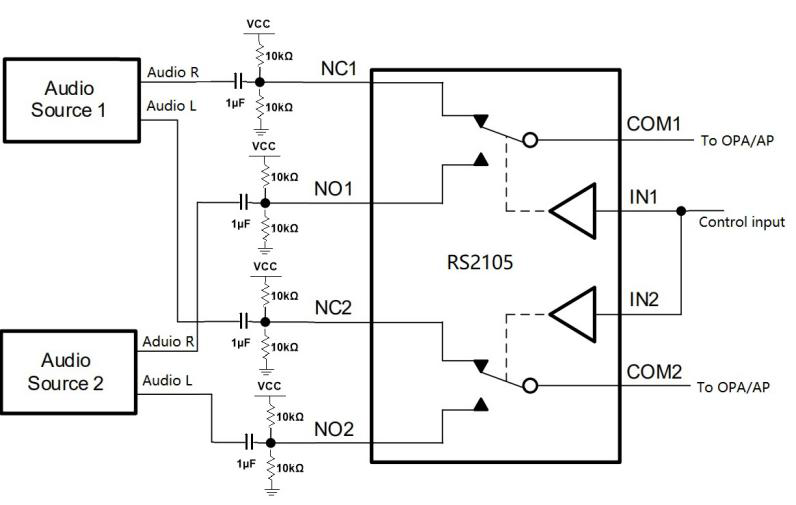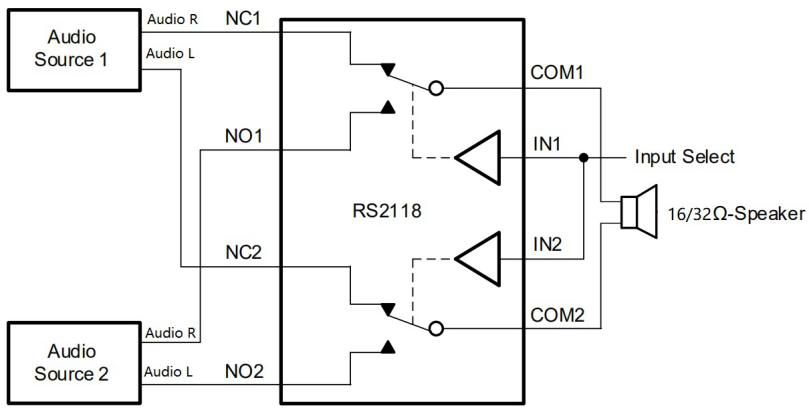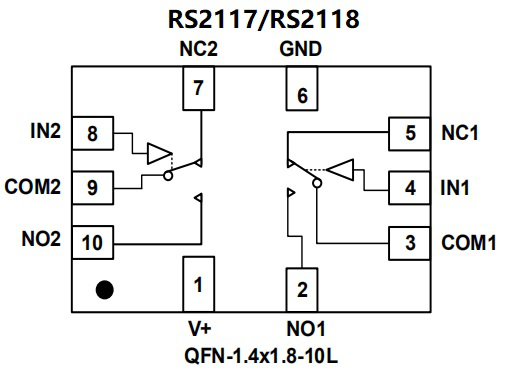Design method of analog switch to switch audio signal
 2022-01-27
2022-01-27The noise-cancelling headphones, speakers, KVM, matrix, mixers, etc often require to process multiple audio signals. Designing a set of conditioning circuit for each audio signal will be very expensive and very complicated. The use of analog switches for interleaving is obviously a very efficient approach.
The following design schemes are commonly used:
1) Switching with an analog switch powered by a common single power supply
The signal range that ordinary analog switches can pass is -0.3V ~ VCC. For switching AC signals such as audio, DC bias voltage should be superimposed, that is, the signal must be raised above zero volts to pass reliably (Fig. 1). Each channel needs to add 3 resistance-capacitance components. If the signal has a DC bias voltage, it can be directly given to the analog switch.
2) Analog switch with dual power supply
The analog switch with dual power supply, including analog switch with built-in negative voltage charge pump, the dynamic range of the signal that can be passed is broader, such as 74HC4051, support -VEE ~ + VCC signal range, but requires additional components, which will increase cost significantly.
3) Use an analog switch with negative swing capability
This is a type of analog switch with a negative swing designed specifically for AC signals, such as RS2117 and RS2118. The negative voltage signal that can be delivered under a single power supply can reach a maximum of -2V. Using this type of IC to switch audio signal circuits is the most efficient and cost-effective Higher (Fig. 2).
4) With relay
Relay is the best choice for performance with small on-resistance and very good isolation, but they are bulky and expensive.

Figure 1 Ordinary switch RS2105 switches audio signals

Figure 2 RS2118 switching audio signal
RS2117 / RS2118 is a dual-channel single-pole double-throw (SPDT) analog switch of Runstone Technology. Its main features are as follows:
● -3dB bandwidth: 400MHz / RS2117, 80MHz / RS2118;
● Low on-resistance: 4.0Ω / RS2117, 0.8Ω / RS2118;
● Working voltage range: 2.5V ~ 5.5V;
● Maximum pass signal range: -2V ~ VCC;
● Ultra-low power consumption:
● High shutdown isolation: -70dB @ 1MHz;
● High channel isolation: -72dB @ 1MHz;
● Provide QFN-1.4x1.8-10L small package.
Note: The smaller the on-resistance is, the larger the current that can pass. RS2118 is more suitable for switching with load.

Figure 3 R2117 / RS2118 pin diagram
Special attention needs to be paid to the design. The negative voltage signal range that RS2117 / RS2118 can pass is subject to the VCC power supply voltage, that is, the negative voltage that can be passed is VCC-5.5V, the lowest is -2V, such as 3.3V power supply, the signal range It is -2V ~ 3.








